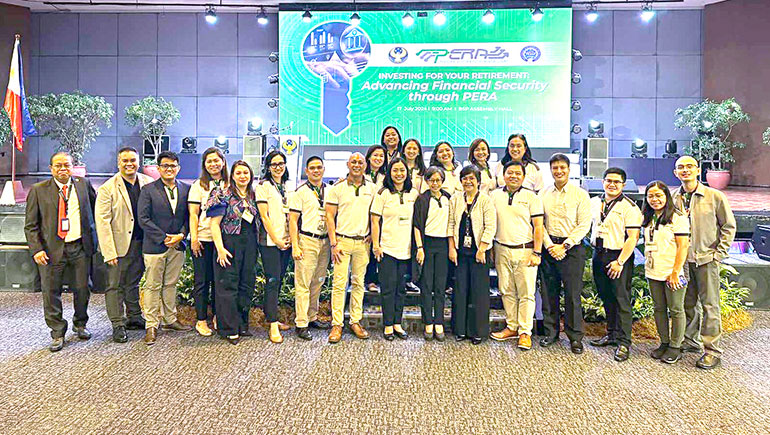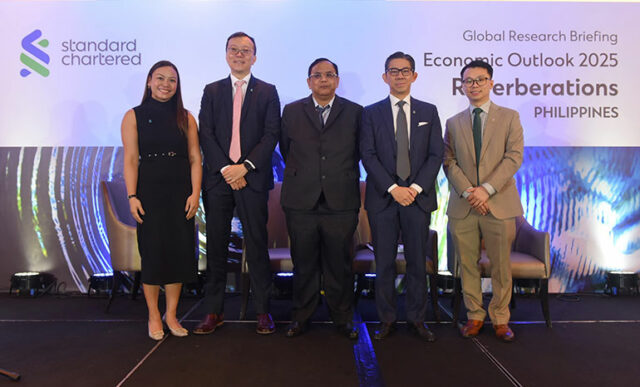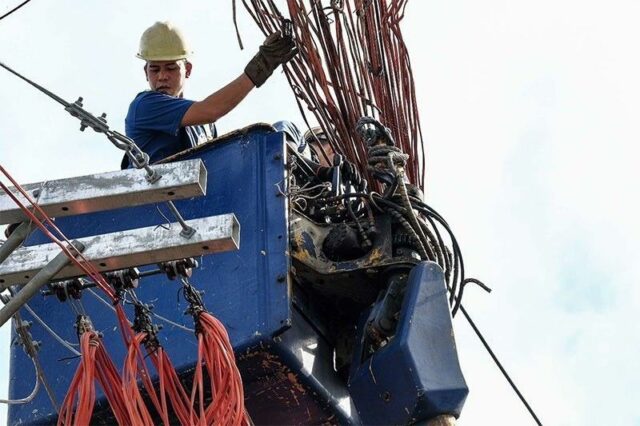Prioritizing ESG on corporate strategy
By Mhicole A. Moral, Special Features and Content Writer, BusinessWorld
Businesses are now recognizing the value of embedding environmental, social, and governance (ESG) considerations into their operations to drive financial and reputational benefits.
While the scope of ESG is broad—spanning climate change, biodiversity, human rights, labor standards, and corporate governance—companies that focus on the most material aspects of their industry tend to see greater success. A report from EY-Parthenon said that ESG factors significantly influence financial performance, especially in investment decisions.
Investors also favor companies that demonstrate a genuine commitment to sustainability, often leading to a lower cost of capital. Businesses that integrate ESG into their strategies can strengthen stakeholder confidence and reduce risks related to reputational damage and regulatory pressures.
Trust institutions, by managing assets, investments, and wealth, can support companies in refining their ESG disclosures. By doing so, they help businesses attract investors who prioritize sustainability.
Such entities can also contribute by directing funds into sustainable ventures. They have the capacity to support projects aimed at reducing greenhouse gas emissions and funding climate resilience initiatives.
ESG’s impact in decision-making
Despite ESG’s growing importance, its role in investment decision-making remains modest. According to HSBC’s report, ESG analysis scored 4.0 in June 2024, a slight decline from 4.7 in February 2023. While ESG remains a crucial consideration, its integration into financial decisions continues to evolve. The data also highlights ongoing challenges in quantifying ESG’s impact on investment performance that shape the strategies of trust institutions.
Geopolitical factors also influence sustainability initiatives. HSBC’s findings reveal that 41% of respondents reassessed their ESG strategies due to global tensions, while 35% cited these tensions as a major obstacle to progress. Meanwhile, 21% said geopolitical instability has increased attention on sustainability issues, with only 14% reporting no impact and 12% noting that progress had accelerated as a result.
Shareholders are also demanding greater transparency and accountability in ESG commitments. The report shows an 11% rise in environmental-related shareholder proposals in 2023, with transition plans becoming a key focus. Shareholders are exerting pressure on firms, particularly those in carbon-intensive sectors, to establish and disclose targets aligned with the Paris Climate Agreement. Trust institutions, acting as fiduciaries, bear the responsibility of ensuring that the assets they manage align with these evolving investor priorities.
Investor confidence in ESG reporting also remains critical in driving sustainable investment decisions. HSBC’s research shows that 62% of respondents believe auditing and assurance of corporate sustainability disclosures would be beneficial. At the same time, 60% are satisfied with the current fund labeling system, indicating that existing classifications provide a reasonable level of transparency.
Meanwhile, artificial intelligence is becoming a consideration in sustainability research. According to the report, 36% of respondents are exploring AI as part of their ESG analysis. This way, companies are highlighting AI’s potential role in refining investment strategies and assessing sustainability risks more effectively.
The report also points to an ongoing debate about the terminology surrounding ESG. About 35% of respondents believe that ESG should be replaced with an alternative framework, indicating that some investors find the current classification inadequate or too broad to be meaningful in financial decision-making.
Meanwhile, an analysis of 130 reports from 11 financial research providers revealed that all of them consider ESG factors in their assessments. Additionally, six providers explicitly integrate ESG considerations into their valuation models, emphasizing the need for clear evidence linking sustainability to business performance.
Traditional ESG integration faces challenges in aligning with performance metrics, prompting a shift toward thematic investments, labeled securities, and impact-focused strategies. Meanwhile, trust institutions are increasingly adapting to these trends by incorporating sustainability considerations into their investment frameworks.
Investment strategies for sustainability
A report by International Finance Corp. (IFC) shows that 71% of the world’s largest companies now disclose their alignment with the SDGs. The report mentioned that banks and trust entities can contribute through impact investing, green finance, and SDG-aligned investment strategies. Trust institutions can also support the expansion of climate finance.
IFC’s involvement in the Philippines has also led to investments in renewable energy, green bonds, and sustainable infrastructure. Projects like green housing, climate-smart agriculture financing, and disaster resilience initiatives align with the broader goal of ensuring long-term sustainability.
Through partnerships with regulators, trust institutions can further integrate ESG principles into their governance frameworks, particularly in the Philippines, where climate risks are factored into financial sector regulations and capital allocation decisions.
Decarbonizing sectors is another key area where trust institutions can contribute, according to IFC. Investments in electric mobility and energy-efficient buildings can reduce carbon footprints.
While the pace of new ESG-focused fund launches has slowed, regulatory developments such as the European Union Deforestation Regulation (EUDR) and the Carbon Border Adjustment Mechanism (CBAM) are expected to influence how companies structure their portfolios. Trust institutions, operating in a highly regulated financial sector, are suggested to navigate these changes while maintaining transparency and accountability in their investment strategies.
The growing emphasis on thematic investments, shareholder activism, and the demand for more transparent sustainability disclosures indicate that ESG considerations will remain significant to financial decision-making.
Strengthening ESG compliance
The Philippine government has taken steps to encourage businesses, including trust institutions, to align with ESG principles. Key regulators such as the Securities and Exchange Commission (SEC), the Bangko Sentral ng Pilipinas (BSP), the Insurance Commission (IC), and the Department of Environment and Natural Resources (DENR) have introduced measures to improve ESG compliance across the private sector.
Trust institutions, including banks and insurance companies, operate under stringent guidelines to ensure sustainability in their operations and investment decisions. They are also required to integrate sustainability principles into their corporate governance frameworks, risk management systems, and strategic objectives.
The BSP’s Manual of Regulations for Banks mandates financial institutions to approve Environmental and Social Risk Management System policies. These policies guide banks in identifying, assessing, and mitigating exposure to environmental and social risks.
In 2023, the central bank increased the single borrower’s limit for green or sustainable projects by an additional 15%, encouraging more investments in environmentally responsible ventures. The following year, the BSP introduced the Philippine Sustainable Finance Taxonomy Guidelines, which provide banks with a structured approach to financing sustainable projects.
Trust institutions managing investment portfolios are expected to align with these frameworks, directing funds toward projects that promote renewable energy, resource efficiency, and climate resilience.
This article is in the special edition of BusinessWorld In-Depth digital magazine, in celebration of Trust Consciousness Week. To get the full issue for FREE, visit https://bworld-x.com/product-category/bw-in-depth-industry-report.
Spotlight is BusinessWorld’s sponsored section that allows advertisers to amplify their brand and connect with BusinessWorld’s audience by publishing their stories on the BusinessWorld Web site. For more information, send an email to online@bworldonline.com.
Join us on Viber at https://bit.ly/3hv6bLA to get more updates and subscribe to BusinessWorld’s titles and get exclusive content through www.bworld-x.com.



 Similarly, TOAP is committed to advocating for responsible investing practices to align investments with its environmental, social, and governance (ESG) criteria. In this regard, the association actively promotes the Personal Equity and Retirement Account (PERA) Act of 2008, a voluntary retirement savings program that supplements the existing retirement benefits from the Social Security System (SSS) and the Government Service Insurance System.
Similarly, TOAP is committed to advocating for responsible investing practices to align investments with its environmental, social, and governance (ESG) criteria. In this regard, the association actively promotes the Personal Equity and Retirement Account (PERA) Act of 2008, a voluntary retirement savings program that supplements the existing retirement benefits from the Social Security System (SSS) and the Government Service Insurance System.









